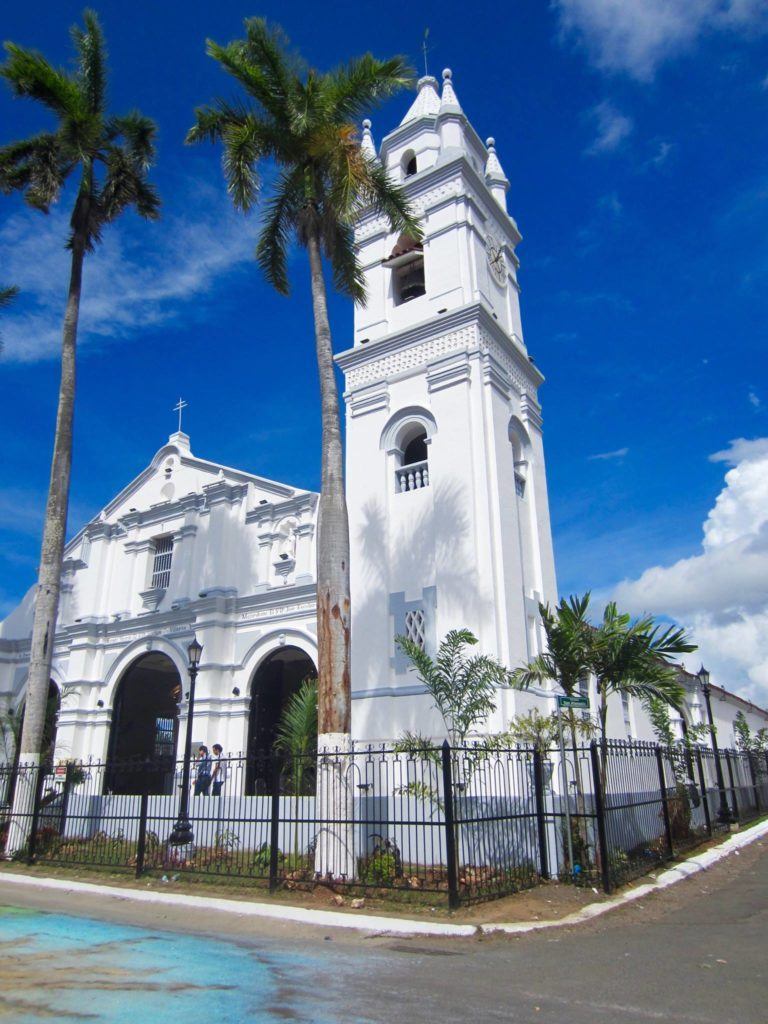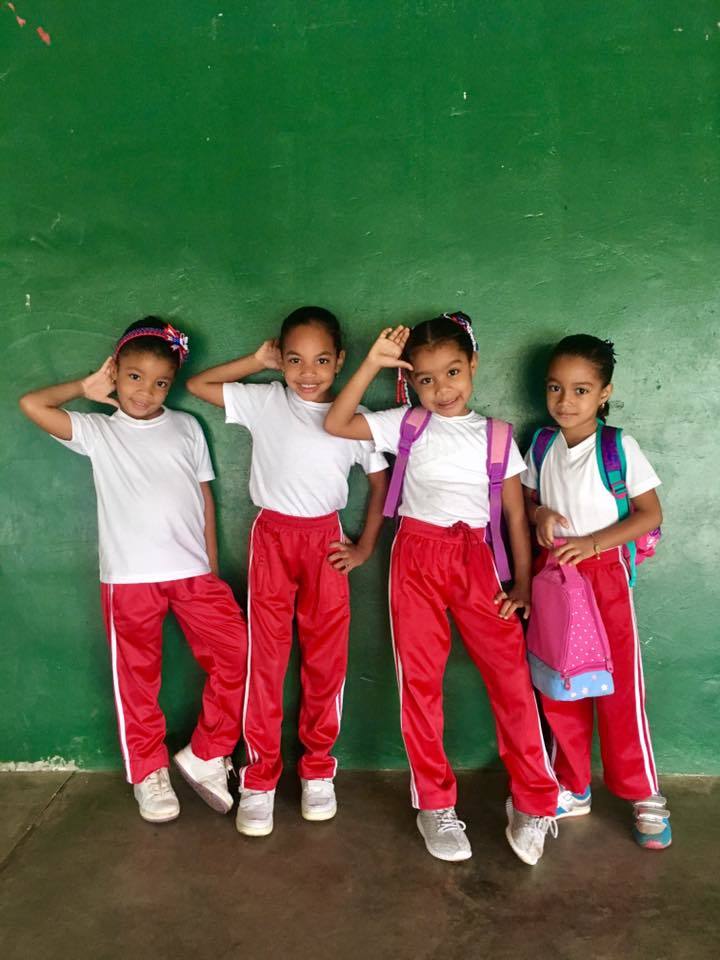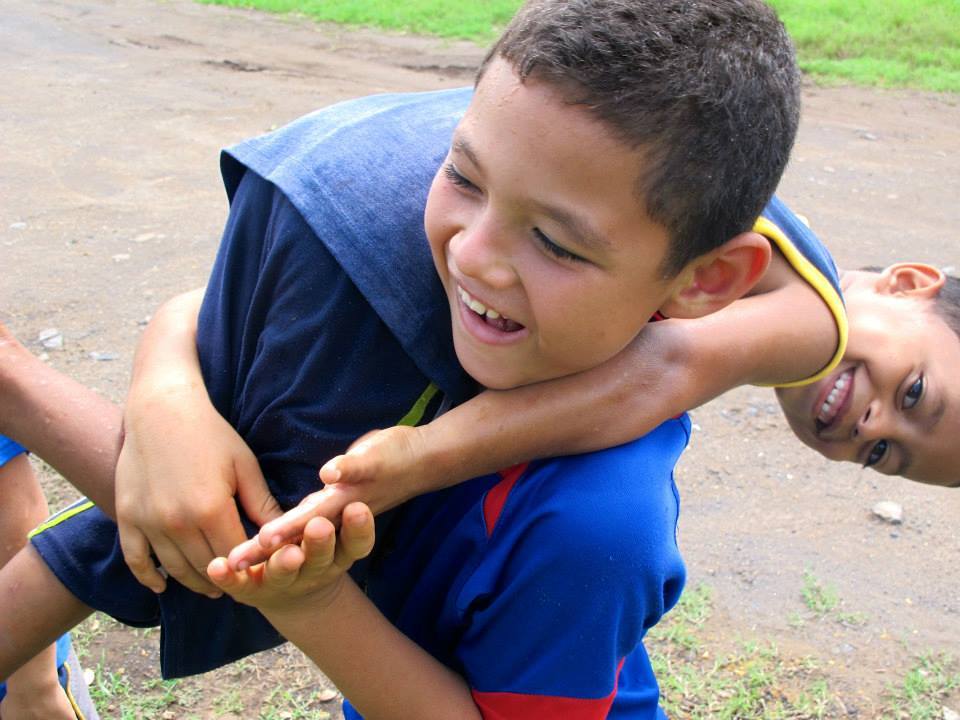panama
Applications for Panama PY24 Open!
2024 Program Dates: June 24th - July 29th

Orientation
June 1st-4th
Casco Viejo, Panama

Midpoint Break
June 16th-18th
Playa Venao, Selina's Hostel

Closing Ceremony
June 30th-July 1st
Casco Viejo, Panama
Language requirement: proficiency in spanish
Quick Facts
- Location: Los Santos Province, Panama
- Language Requirement: Proficiency in Spanish
- Setting: Rural
- Duration: 4.5 weeks
- Volunteers: 10-12
- Living Conditions: Basic

PROGRAM STRUCTURE
Volunteers will begin their experience by arriving in Panama City for a three-day Orientation. The first thing that will greet our volunteers in-country is Panama’s hot and humid weather! It might take some adjusting, but volunteers can expect to enjoy a comfortable stay at Luna’s Castle Hostel in the Casco Viejo province. There, volunteers will get to know each other while learning about the culture and the language. While in Panama City, volunteers will begin learning about the culture by exploring the city, interacting with locals, and trying traditional Panamanian food! During this time, volunteers will also get together to share teaching ideas and activities!
After orientation, everyone will travel together to the Los Santos province, about a 4 hour journey from the City. There, our volunteers’ amazing host families will be waiting to take them to their new homes! The close proximity of our host communities will allow our volunteers to stay connected throughout the program. After 2 weeks of teaching, all volunteers will reunite for midpoint break. During midpoint break, volunteers will be traveling to Playa Venao, a beautiful beach a couple hours away from their host communities. There, volunteers will have the opportunity to share their experiences, discuss their teaching strategies, and get to build stronger relationships with their peers.
After midpoint break, volunteers will wrap up their last few weeks of teaching in their host communities. The program will conclude with two days back in Panama City for the closing session. Volunteers will reflect on their LE experience and share what they have learned and appreciated from the program!
The Ideal Volunteer:
Village Information
Villages will range depending on your placement. Volunteers will be distributed throughout the Los Santos region, which means that a neighboring village could be anywhere from a five-minute walk to a thirty-minute bus ride. All villages are extremely accommodating, but due to the impoverished nature of the region, the comforts of home are few and far between. The schools will range in size with larger schools being in more urban areas and smaller ones in more rural areas. As a result, the resources in the school will vary from air-conditioning and computers to a bare, open-air room. All schools will have chalkboards, chalk, and desks for the students. Some examples of villages where volunteers have taught at in the past include:

Macaracas- a small urban town with a population of around 2,500. Macaracas has three Internet cafes, two of which are air-conditioned, as well as a small hospital. The school is very large, but the town center is fairly small, consisting of shops forming a square around a central plaza.
La Colorada- a small and extremely spread out rural town with a population of about 1,000. The roads are unpaved, and the living conditions are very basic, where running water is not always assured. Most houses have outhouses instead of indoor plumbing. The school, however, has just been renovated and has computers, air conditioning, and internet access.
Host Community
Panamanian families are extremely hospitable and accommodating. They are quick to welcome you as part of their family. Your family will help you experience Panamanian culture through bringing you to a rodeo with modern day gauchos, feeding you traditional foods such as "arroz con pollo," or even teaching you how to dance "tipico" in a “pollera”. You should not expect to have all the accommodations that you do at home in the United States or UK. On the other hand, these families might also have televisions, cellphones, and cars. Your family will most likely not have any English speakers.
All volunteers will have free time outside of teaching, and it is up to you to decide how to spend it. During the week, you can spend time discussing issues with your Panamanian family, you can visit another volunteer, or you can even visit a nearby city to pick up supplies. On the weekends, there are many accessible and interesting places in and nearby the Los Santos region. Such places include El Valle, a town set in the crater of an ancient volcano, or Pedasí, a popular beach town. We recommend that volunteers spend their first weekend in-country with their host families to create a strong bond.

Panamanians in the Los Santos region tend to have diets of rice, beans, meat, and few vegetables. Vegetarians are asked to consider this before applying, although previous vegetarian volunteers have done just fine with additional planning prior to their trip. Also, as electricity can be scarce or expensive, unnecessary electronic devices should not be brought to Panama. There is a possibility that they may be stolen, lost, or broken, and we ask volunteers to be discreet with their electronics. Conditions can be tough in Panama, and volunteers must be resourceful and very aware of their surroundings in order to enjoy their time.
Overall, the LE Panama program welcomes anyone who is dedicated to being an effective teacher and who is completely open to learning as much as they can about a new culture. The LE Panama experience is unique in that it is the only country with a language requirement, thus enhancing the opportunity to build strong, long-lasting bonds.
Teaching
Your teaching space will most likely be a room at a local school or community center, and you will be teaching during the students' regular school year. The school year in Panama is separated into trimesters. We will be there in the second trimester. You should expect to teach anywhere between 30 and 150 students in total, depending on the size of your host community. You will be teaching students of all ages, from 5 to 18 years old, although volunteers have also taught older adults in past years.
Most of your students will be beginners in their knowledge of English, so your classes will generally be very basic. You will be required to teach for about three hours a day, but you will most likely teach longer than this due to high demand. Most school days start at 8 A.M. and end around 1 P.M. It is also likely that enough adults will be interested to allow for an adult class in the evenings. There is a lot of interest in learning English and you should expect your classes to be full. You may be working with an English teacher; however, it is possible that there is no English teacher at the school you are placed in and that you will have full control of the classroom.
You should bring along a few other basic teaching supplies and prizes for games, such as stickers, American candy, and photos of your life at home. You will have the opportunity to be creative in your teaching which is generally a great change of pace for students that spend most of their English classes copying out of the Ministry of Education’s English textbooks. Keeping your classes interested and occupied can be a challenge, but always proves to be one of the most rewarding aspects of the program. Don’t worry if you have little to no experience leading a lesson; we will cover different ways to create and implement a lesson plan during orientation and prior to the program's start date!

Service Project
While in the country, volunteers will be required to get involved in their community. This is a great opportunity to build relationships with not just your host family, but with the entire neighborhood! It also gives volunteers the chance to be creative outside the classroom and integrate other unique talents or skills into their communities. Such activities include providing extra English tutoring, getting involved with school/community events, volunteering at a local clinic or church, or playing sports with your students.
Country Information
WEATHER & CLIMATE:
There are two things to know about Panamanian weather: it is extremely hot and humid. The humidity is due to the fact that it is the rainy season during our summer (their winter). Temperatures will range from 70°F-100°F, with 80% humidity. Expect to get pretty sweaty even when you are just standing still, and do not forget to pack an umbrella!
FOOD & DRINKS:
The typical Panamanian diet includes rice, beans and fried meats, like chicharones, which is fried pig fat. Vegetables and fruits are usually not served unless asked for. They are also fried sometimes, like patacones, which are fried plantain slices. However, there is an abundance of mangoes, avocados, and papaya which grow outside homes and schools, among other fruit. Most families will have a mango tree that you can pick fruit off of and eat. In order to survive as well as be respectful, you should try to eat everything put on your plate. If you cannot, be polite and excuse yourself. Also, if it is something new, try it! Vegetarian options essentially include rice, beans, potato salad and fruit. Vegetarians should consider buying some vitamin supplements if they are accepted.
Drink water! With all of the heat and humidity, it is easy to become dehydrated.
Alcohol plays a large part in Panamanian culture. As a volunteer, you have been chosen to make responsible, mature choices, so it is up to you whether you choose to drink. Remember, you are not only a representative of Learning Enterprises, but also a representative of your country.
LANGUAGE:
Spanish is the official language of Panama. You should have intermediate knowledge of the language, as it is necessary to communicate with your host parents, students, and any other people you may encounter along the way. Dictionaries might be useful when planning classes, but are impossible to use in conversation. Consider taking a class prior to the trip, or download an app to help you fine-tune your Spanish.
The Panamanian dialect and slang are things that you will pick up during the trip. Volunteers will quickly notice that Panamanian Spanish, especially in the rural region that volunteers will be placed in, sounds a lot different than what you learn in a classroom setting. In addition to the basics, you will also need to know different slang terms, such as “chiva” which means bus, “Balboa” the term for Panamanian money, and “chino” which refers to the convenience store.
Some Awesome things about Panama!
Meet your Program Director, Erin Schaal!

Erin earned her M.Ed from the University of Maryland and is in her ninth year of teaching elementary education. She began her career with the goal to nurture confident problem solvers by utilizing strengths-based approaches. Since then, she has been able to expand on that goal by mentoring intern teachers and leading teacher training programs in Malaysia, adhering to the same positive, holistic philosophy that she uses in the classroom. It has been hugely fulfilling to see how these practices can uplift children, adults, and entire communities; and she hopes that in her role as Program Director in Panama, she’ll be able to facilitate an equally rewarding experience for all involved.